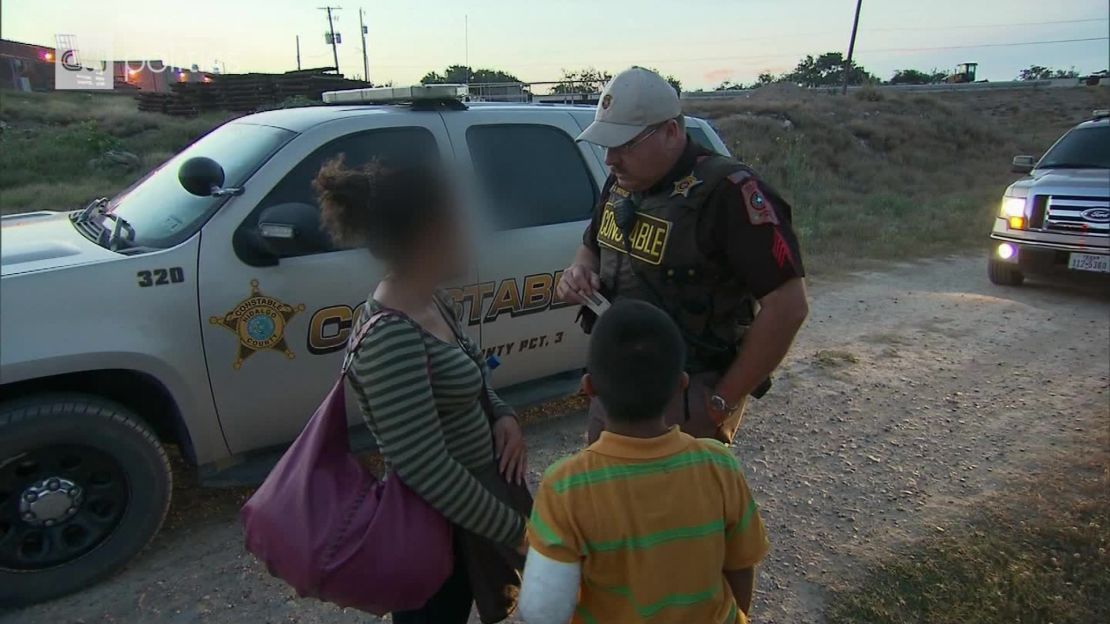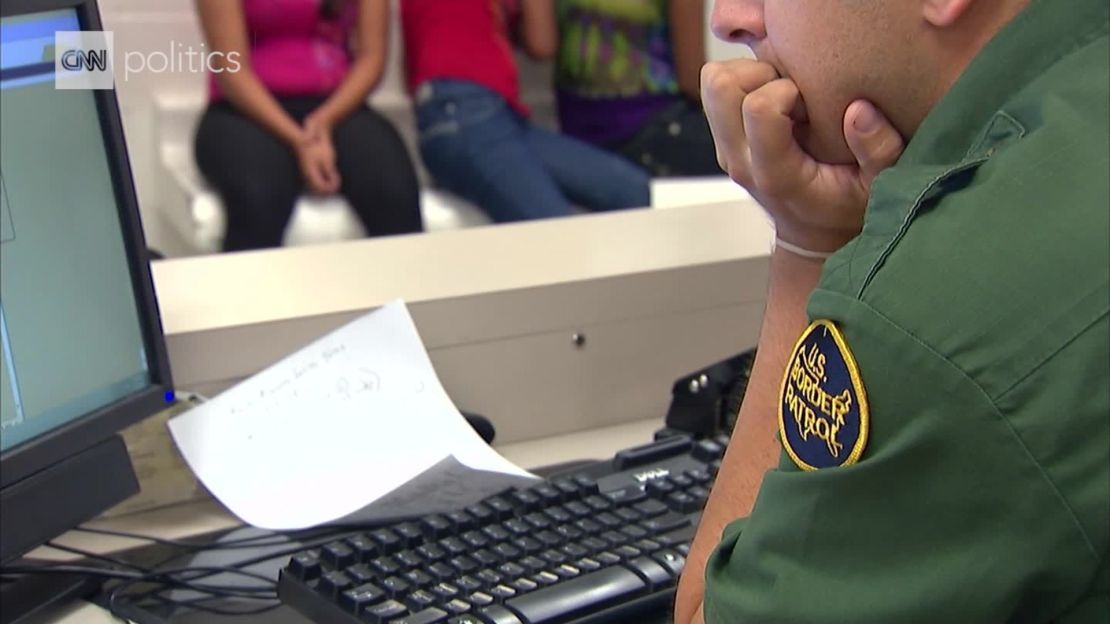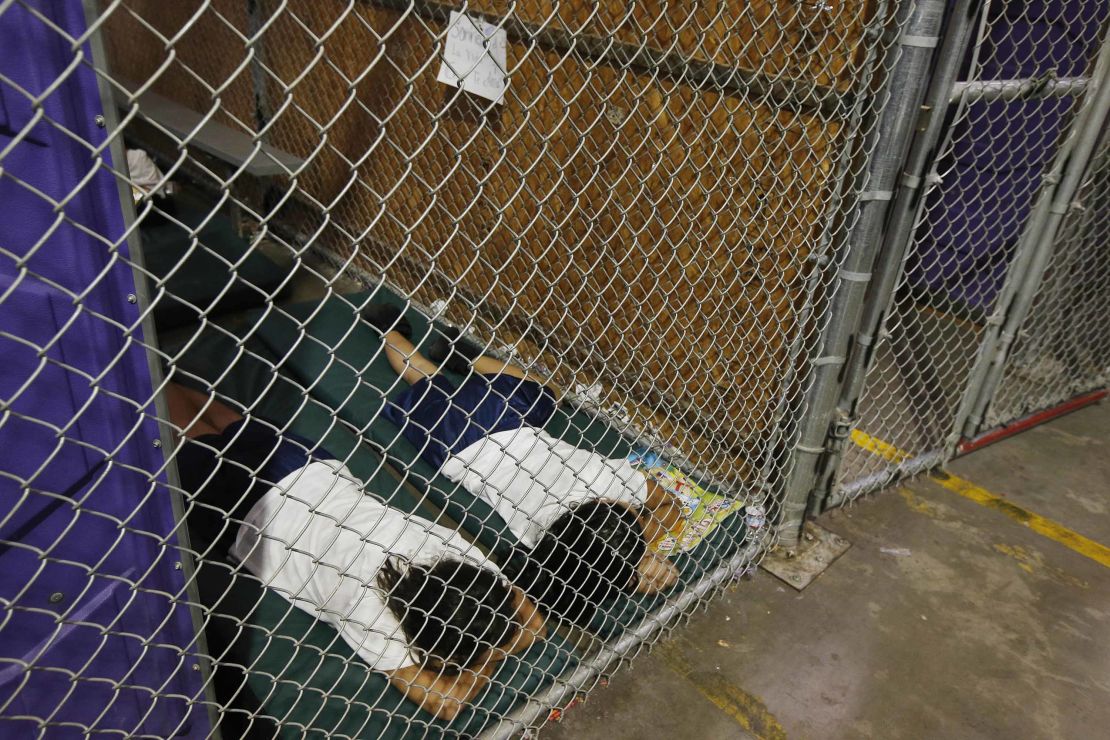In the past few days there’s been a flurry of emotion, and misinformation, regarding child immigrants in the United States.
Recent reports claim the US Department of Health and Human Services has lost track of nearly 1,500 immigrant children. There’s confusion about whether they were separated from their families at the border. And controversy is swirling around a mysterious photo of two immigrant children behind a chain-link fence.
Here is what it all actually means.
No, the 1,500 children weren’t necessarily taken from their families at the border

In early May, the Trump administration announced it would start enacting a “100% prosecution” policy at the border, which would refer anyone crossing the border illegally for federal prosecution. This policy functionally separates children from their families, because children cannot accompany adults who are taken into federal custody.
Because of the attention surrounding this new policy, people revisited a claim made by Steven Wagner, a top official with the Department of Health and Human Services, during a hearing in April. During that hearing, Wagner said the Office of Refugee Resettlement (ORR) was “unable to determine with certainty the whereabouts of 1,475 UAC (unaccompanied alien children).”
Some people began to conflate Wagner’s comment and the new policy, forming the idea that these children were forcibly separated from their families at the border and then lost. In fact, ORR officials couldn’t locate the children between October and December of 2017 – way before this new policy took effect.
In fact, unaccompanied child immigrants don’t come over the border with their families – hence the designation of “unaccompanied.” Some of the 1,500 children could have been separated from the groups with which they entered the country, but it would not have been as a result of the Trump administration’s new policy. For instance, if a child comes with an adult and it can’t be verified that the adult is a parent or legal guardian, the adult and child would be separated.

“The way it has worked historically is, when a child comes into the US without a parent or legal guardian, if there is a parent or guardian or relative already here, they would be placed with that person as a ‘sponsor’ while they are undergoing immigration hearings,” says Jennifer Ward, an immigration and family services expert who spent 10 years as executive director of a refugee resettlement agency in Tennessee.
Ward says the ORR typically makes a follow-up welfare call or visit to the sponsor a few weeks or months after the child is placed. According to Wagner, such an action is part of the ORR’s process, but the agency “is not legally responsible for children after they are released from ORR care.”
No, they are most likely not ‘missing’
When it comes to children, phrases like “unable to determine whereabouts” never inspire comfort, especially when people assume it is as a result of a child being ripped from their families. But the reality is a little different.
There could be a lot of reasons for why the 1,475 children were unaccounted for, Ward says.
“The sponsors may be undocumented themselves, they may change their phone number,” she says. “The requirement is just a phone call – you don’t necessarily have to go (check on the child) physically, although some do.”
Wagner, too, defended his original claim by saying that sponsors who are “illegal aliens” probably “do not want to be reached by federal authorities.”
In a conference call with reporters organized by the White House on Tuesday, Wagner said the 30-day check-in phone calls in those cases simply weren’t answered. He compared the outcry over the “lost” children to calling a friend and, when they don’t answer, assuming they were kidnapped.
In reality, he said, many of the adults may also be undocumented.
“You can imagine that many of those would not choose to speak to a federal official calling them on the phone,” Wagner said. “But there’s no reason to believe that anything has happened to the kids.”
But that doesn’t mean everything is fine
Obviously, the idea that young immigrants and their families would not want them to be accounted for by the government speaks to an impossible question: Are these children better off not being accounted for?
Some immigration experts have said that the ORR not trying to keep track of children could be a good thing, because the kids can live their lives without constant fear of deportation.
That fear – that the ORR is working in concert with ICE to facilitate deportations – could definitely lead immigrants to avoid contact, Ward says.
But that could also put children at risk in a different way.

“They need to feel safe enough to say, ‘Hey, I’m here and I’m okay,’ because if they don’t do that, other bad things can happen,” she says. “Because people aren’t being accounted for, there is potential for abuse.”
That includes the possibility that children fell into the hands of traffickers or were recruited into violent gangs.
The hearing where Wagner testified last month, for example, was convened around the case of eight children who were placed by the government with human traffickers and sent to work on an egg farm in Ohio.
The children in this photo were not separated from their families in the way they would be today
This weekend a photograph showing two immigrant children sleeping in a fenced enclosure began to surface online. It was tweeted out by several high-profile political commentators, including some CNN personalities.

At first, it was presented in the context of the Trump administration’s new policy, implying the photo was recent and the children were separated from their families. But it soon became apparent that the photo was taken in an Arizona detention facility – in 2014. It has nothing to do with the Trump administration at all.
Some supporters of President Trump are now using the image to claim the Obama administration also separated immigrant children from their families under the same circumstances.
Again, while children have historically been separated from family members at the border under certain circumstances, it was not the same as the new 100% prosecution policy, which affects children even if they come in with parents or legal guardians.
In fact, the full context and explanation for the photo was published in the Arizona Republic in 2014.
“Two female detainees sleep in a holding cell,” reads the caption of the photo, which was taken by an AP photographer during a tour of a detention center in Nogales. The article also identifies them as “unaccompanied minors” – meaning, most likely, they were not taken from their parents.
“The tour dispelled rumors of ill treatment,” the article reads. “The (US Customs and Border Protection) agents in the building seem to be genuinely compassionate in their interactions with the children. The facility is clean and air-conditioned. But in essence, it is a juvenile prison camp.”
Advocates have complained that detention facilities for minors are essentially the same today as they were then.
CNN’s Tal Kopan contributed to this report

















